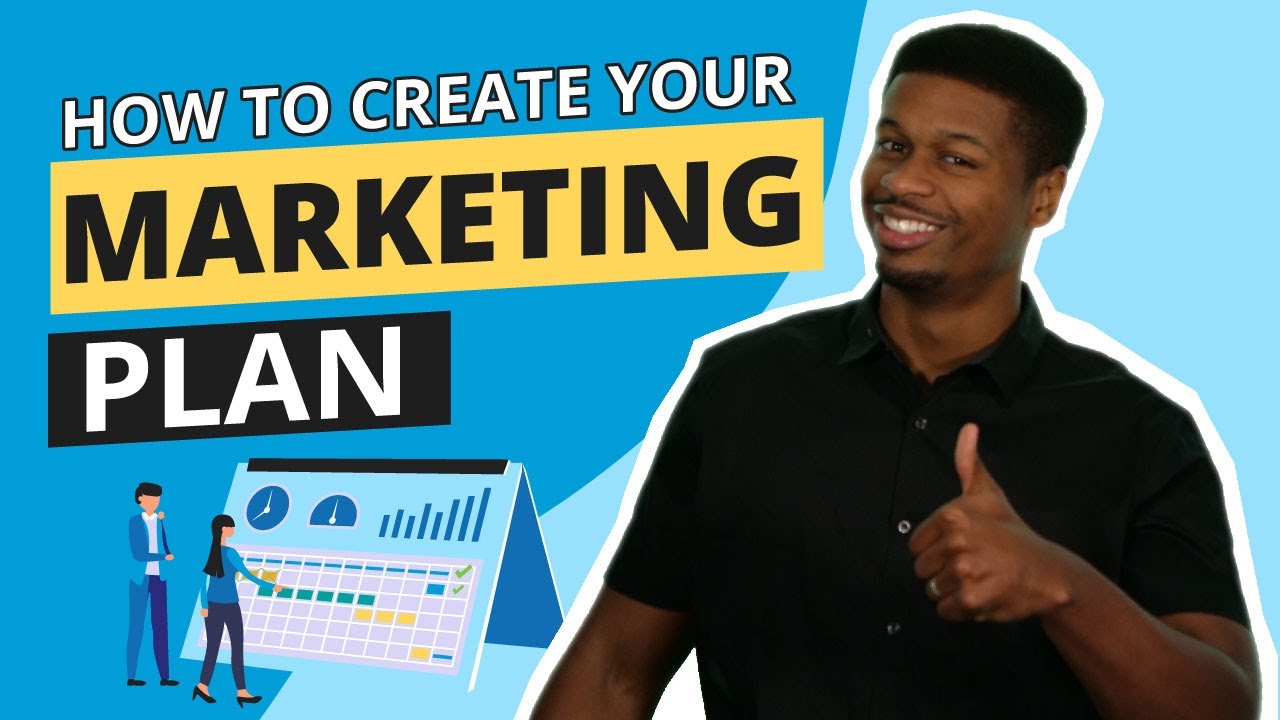My Marketing Plan Process - 6 Steps to Marketing Any Business (Products or Services)
Summary
TLDRIn this video, marketing expert Neil Patel outlines a six-step marketing plan for businesses. He emphasizes defining clear goals, understanding your customers deeply, assessing your key strengths, choosing one marketing channel to focus on, conducting competitive research, and defining a monetization strategy. Patel suggests using tools like SurveyMonkey for customer feedback and Ubersuggest for competitive analysis, ensuring viewers can implement these strategies to boost their marketing effectiveness.
Takeaways
- 🎯 Define clear marketing goals: Knowing whether you want more traffic, brand awareness, revenue, leads, or e-commerce sales is crucial for effective marketing.
- 🧐 Understand your customers deeply: Beyond surface-level demographics, truly understanding customer motivations, problems, and decision-making processes is key.
- 🗣️ Engage with customers actively: Use surveys, direct conversations, and feedback to gain insights into what makes your customers choose you over competitors.
- 🏋️♂️ Assess your key strengths: Identify areas where you excel, such as SEO or social media marketing, and focus on leveraging those strengths initially.
- 🚀 Choose one marketing channel: Start with a single channel that aligns with your strengths to achieve laser focus and maximize early results.
- 🔍 Conduct competitive research: Analyze what works for your competitors using tools like Ubersuggest to inform your strategy and avoid common pitfalls.
- 💸 Define a monetization strategy: Determine how you will convert traffic into revenue, whether through lead generation, sales funnels, or other methods.
- 🔧 Use tools for optimization: Employ tools like HelloBar for email collection, CrazyEgg for A/B testing, and others to refine your marketing and conversion strategies.
- 📈 Focus on conversion: Traffic is important, but converting visitors into customers is the ultimate goal, requiring a strategic approach to lead capture and sales.
- 🌟 Tailor your approach: Recognize that a one-size-fits-all strategy doesn't work; each business needs a unique plan based on its goals, strengths, and customer insights.
Q & A
What is the first step in Neil Patel's marketing plan process?
-The first step is to define your goals. This includes determining whether you want more traffic for brand awareness, more revenue, more leads, or increased e-commerce sales.
Why is it crucial to define your marketing goals before starting a campaign?
-Defining goals is crucial because it helps you understand what marketing tactics to leverage and which ones to avoid, ensuring that your marketing activities align with your objectives.
What does Neil Patel suggest to truly understand your customers?
-To truly understand your customers, Neil Patel suggests going beyond surface-level demographics. He recommends talking to them directly, surveying them, and using tools like SurveyMonkey to gather feedback and insights.
How can understanding your customers' problems and motivations help in marketing?
-Understanding your customers' problems and motivations allows you to tailor your marketing messages and offerings to address their specific needs, increasing the likelihood that they will choose your product or service over competitors.
What is the third step in Neil Patel's marketing plan process and why is it important?
-The third step is to assess your key strengths. It's important because it helps you identify the marketing channels where you excel, allowing you to focus on strategies that are most likely to yield results quickly.
Why should you pick one marketing channel to focus on initially?
-Focusing on one marketing channel initially allows for laser-sharp focus and a higher likelihood of success. It's more effective than spreading efforts too thin across multiple channels.
What is the purpose of competitive research in marketing?
-The purpose of competitive research is to identify what strategies are working for your competitors, so you can replicate successful tactics and avoid ineffective ones.
How can tools like Ubersuggest help in competitive research?
-Tools like Ubersuggest can provide a detailed report on competitors' traffic, top pages, number of links, social shares, and keyword rankings, offering insights into their marketing strategies.
What is the final step in Neil Patel's marketing plan process and why is it significant?
-The final step is to define how you're going to make money. It's significant because attracting traffic is only half the battle; you need a strategy to convert that traffic into sales or leads.
What are some tools Neil Patel mentions that can help in converting traffic into sales?
-Neil Patel mentions tools like HelloBar for collecting emails, retargeting tools like Subscribers to bring people back to your site, and Crazyegg for A/B testing to optimize conversion rates.
Outlines

This section is available to paid users only. Please upgrade to access this part.
Upgrade NowMindmap

This section is available to paid users only. Please upgrade to access this part.
Upgrade NowKeywords

This section is available to paid users only. Please upgrade to access this part.
Upgrade NowHighlights

This section is available to paid users only. Please upgrade to access this part.
Upgrade NowTranscripts

This section is available to paid users only. Please upgrade to access this part.
Upgrade NowBrowse More Related Video

Welcome to the Instagram Unlocked: From 0 to 100,000 Followers - New Neil Patel Course

The Definition of Digital Marketing by Neil Patel

How To Go From Zero to 100,000 Subscribers on YouTube - YouTube Unlocked - Module 1 - Lesson 1

Marketing Plan for 2024: A Complete Video Guide for Right Now

Welcome to the Content Marketing Unlocked! - Free Content Marketing Course with Neil Patel

How To Get B2B Leads & Clients On LinkedIn - Module 1 - Lesson 3 - LinkedIn Unlocked
5.0 / 5 (0 votes)